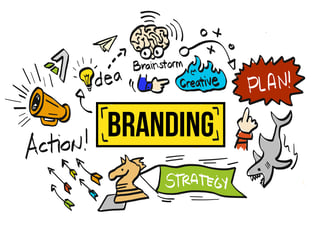As people living in a hectic, digitally-oriented world, we’re inundated with branding. But what exactly is a “brand”? It’s certainly long been part of our mainstream culture. Watch any episode of Mad Men and you’ll hear all about the importance of building a “corporate identity.”
A brand brings together everything a company believes in and stands for into both a visual and written elevator speech – which, on all platforms, should produce a certain kind of positive emotion from a company’s target market.
That’s why so much effort is put into coming up with a plausible, highly-marketable brand. It’s not something that can be done quickly. Companies compete to make their brand (and their products/services) “stick” in the minds of consumers in order to make it memorable.
So where do you start? These 5 tips provide a quick roadmap to developing your brand:
1. Define your “why.”
Although it may seem obvious, being able to portray your company values effectively is critical for brand recognition. These seemingly straightforward questions are important to think about methodically.
- Why did you start the company?
- Why do you offer the products or services you offer?
- What values and qualities do you want customers to relate with your company?
- Why would anyone want to buy from you instead of your competition?
For most companies, this conversation can lead to a very succinct mission statement. For others, it’s more of a guiding principle. If you’d like to delve a little deeper into this concept, consider reading Start with Why by Simon Sinek.
2. Think of your brand as a person.
Your company has a personality all its own. What does this personality want to be known for? Think of how you feel when you hear the words, “Like a good neighbor, State Farm® is there.” (State Farm Insurance.) Or, “We bring good things to life.” (General Electric.)
Invest some time in fleshing out your imaginary person behind the brand. Then use those ideas to make marketing decisions regarding tone of voice, language used, and your brand guide (you know, all those fun things like colors, fonts, and other visuals that give your brand that special look). All these things need to align with your brand identity.
3. Be original and cut out the hype.
Originality is what makes your company stand out from the competition. Even if you have a product or service similar to a competitor’s, if you brand and market yours correctly, you can gain more market share and repeat business. It’s not necessarily about being clever, but about how you can creatively become your customer’s champion – their guide to solving their problems authentically, which means foregoing any unnecessary sales hype.
4. Be honest. It really is the best policy.
Consumers these days are exceptionally well-educated when they go looking for products and services. They’re very discerning when they’re weighing one brand over the other, so being authentic in how the company operates as well as in how it relays its marketing messaging is paramount to long-term success.
Remember that in today’s social-sharing world, it doesn’t take much for consumer backlash to go viral and ruin a company’s reputation. A certain 2009 YouTube video called United Breaks Guitars revealed how outraged a man became after United Airlines cargo handling personnel broke one of his guitars. United did nothing to help him, despite his repeated efforts to get the situation resolved. That is, not until he created the video. This is a great example of good branding (and customer service) gone wrong.
Consumers can be very fickle. If you aren’t consistently showing the absolute best version of your company across all departments, your customer base will respond by taking their pocketbooks elsewhere and likely giving your company a bad review or two on social media.
5. In the end, branding is really all about the customer.
While your brand does represent your company personality, values, etc., it also has the dual role of speaking directly to your audience. When a customer sees your logo, calls for customer support, purchases a product online, or walks into a store, they should be able to immediately feel they know, like, and trust what you offer. This needs to happen every time they make contact with your company or see your ads.
If you’re having trouble defining your brand, you’ll find the process will go much faster and easier when you have an experienced guide taking you through each stage. This is how i7 can help maximize your results. We call it intelligent brand management. Your brand is your customer calling card. You can make it a cut above the rest with the right brand strategy. Simply contact us today for a free no-obligation consultation.


Submit a Comment
Your email address will not be published. Required fields are marked *